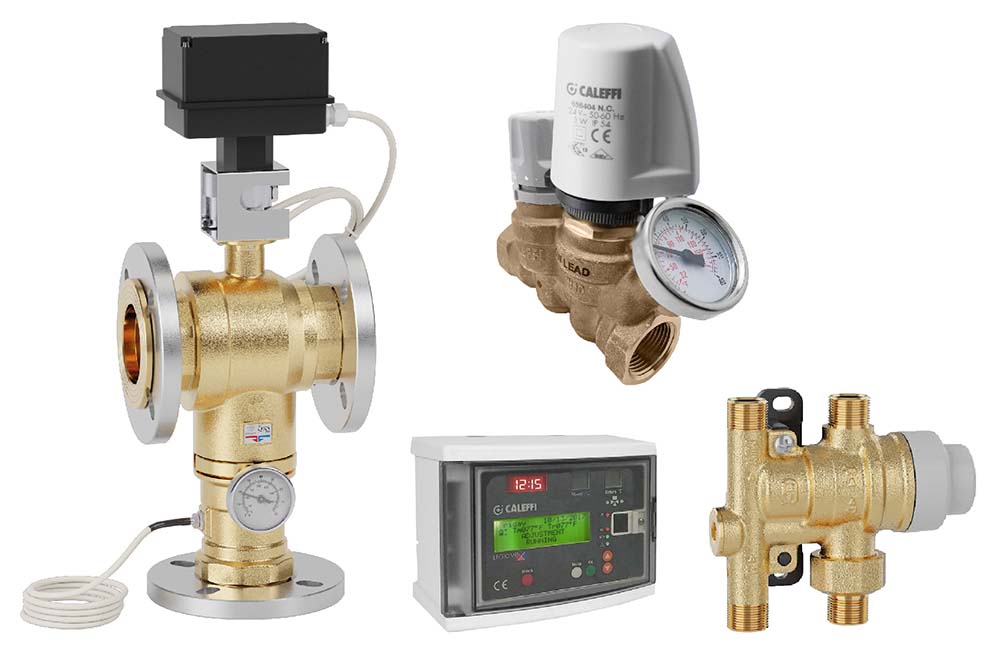It seems everyone today is seeing green. A series of natural disasters, ranging from wildfires to windstorms, has people taking a more concerned look at the environment. Industries from auto makers to fashion houses are looking at how they can do their part, and that includes the HVAC industry.
There are a wide variety of products that help consumers align their concerns for the environment with their desire for comfort. These range from duct wraps made from recycled denim to ice-powered air conditioners. But one of the products most at the forefront of the sustainability push is heat pumps.
Dual-Fuel Heat Pumps
A combination of government bodies, climate action groups, and utilities have been pushing the benefits of heat pumps to consumers, said Chris North, senior specialist for residential product marketing at Mitsubishi Electric Trane HVAC U.S. (METUS). This helps create market demand, allowing manufacturers to invest in the technology. To help overcome consumer concerns about dependable comfort, companies such as METUS offer dual-fuel systems that combine the energy-efficiency benefits of heat pumps with an operable gas furnace.
METUS recently introduced the Intelli-Heat dual fuel system. It connects and mounts in-line with any thermostatically controlled furnace and ductwork. The heat pump provides most of the heating and cooling with the furnace available for conditions of extreme cold.
“We like to think of dual-fuel systems as a bridge between old and new technologies, similar to hybrid cars,” North said.
Like a Prius, dual-fuel systems still reduce fossil fuel use compared with traditional systems. But they also reduce that consumer anxiety associated with an all-electric offering. By reserving the furnace as a secondary heating source, dual-fuel systems reduce a home’s carbon emissions up to 40% compared to using a gas furnace alone, North said.
Homeowners typically purchase heating and air conditioning systems when older systems fail, and newly installed systems usually remain in service for longer than a decade, he said. A homeowner might purchase a dual-fuel system if they have an operable furnace but need a new air conditioner. A dual-fuel option creates new opportunities to improve a home’s sustainability for the long term with heat-pump technology.
“We’re seeing a lot more companies offer green, energy-efficient systems than ever before, and there's been high demand for this product from contractors involved in our product testing phase,” North said.
Education and training manager, Caleffi Hydronic Solutions
Domestic Hot Water Recirculation
The industry regularly recognizes the efforts of manufacturers to invest in green technology. The 2022 AHR Expo Innovation Awards featured a category for sustainable solutions. One of the winners was the domestic hot water (DHW) recirculation systems from Caleffi Hydronic Solutions.
The baseline design for DHW recirculation can be wasteful, said Max Rohr, Caleffi’s education and training manager. In some cases, water is stored and circulated at excessively high temperatures in order to satisfy the most hydraulically remote fixture.
“There is no design or service advantage to excessive recirculation,” Rohr said. “If anything, oversizing recirculation pumps can more quickly lead to pinholes in copper. There is nothing sustainable about replacing copper and sheetrock.”

RECIRCULATING: Components of the Caleffi DHW recirculation system work together to reduce waste. It won an award for sustainability at this year’s AHR Expo. (Courtesy of Caleffi)
With the Caleffi DHW recirculation system, the Legiomix point of distribution mixing valve automatically controls the water temperature to the design set point. Once the water leaves the mechanical room, the ThermoSetter thermal balancing valves modulate flow to ensure a constant temperature in each of the branch circuits or riser loops. The Legiomix and ThermoSetter valves allow the system to modulate with demand, instead of assuming a worst-case demand scenario. This combination helps lower the speed of the recirculation pump and reduces the number of water heater cycles needed to keep up with the heat loss of the circulated loop in low demand situations.
Rohr said this system has been used in Europe for many years for thermal disinfection. The adjustments made along the way better enable the control components to work with heat pump water heaters, ECM circulators, and building management systems. He said that in North America, it proves a great fit for buildings that don't currently provide thermal disinfection, which is becoming more and more of a requirement for building operators.
The surprise for Caleffi, he said, is that contractors are installing this system because it avoids scaling in the valve. It utilizes a daily exercise function that keeps the ball valve free of scale build-up to ensure smooth and long lasting operation.
“Right now, the replacement business is the main driver, but this type of system could become the basis for design for new hospitals one day, as an example,” Rohr said.
HVAC contractors are up for meeting the challenge of adapting to the new demand for sustainable products, Rohr said. They are starting to offer “green, greener, greenest” options to their customers. But they don’t lose sight of what is really important.
“Contractors don't want to sacrifice reliability for sustainability,” Rohr said. “They need to be confident with the products they are using to push the energy efficiency envelope.”








